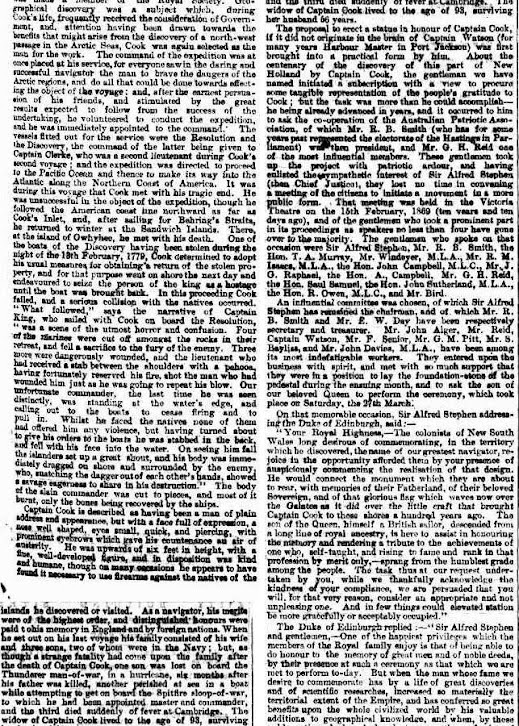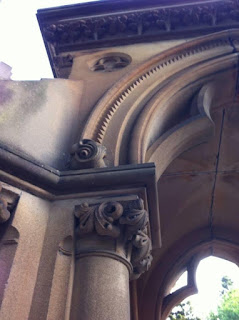Sydney Grammar School - College Street - Sydney
Sydney Grammar School, located on College Street in Sydney, New South Wales, is one of Australia's oldest and most prestigious educational institutions. Its history dates back to the early 19th century and is closely tied to the development of education in Australia. Here is an overview of the history of Sydney Grammar School:
Early Years and Founding:
- Establishment: Sydney Grammar School was founded in 1854 by Sir Henry Parkes, a prominent colonial politician and later known as the "Father of Federation" for his role in the formation of the Australian nation. The school was established with the aim of providing a high-quality education to boys in Sydney.
Growth and Development:
Early Location: The school initially operated from a small building in Sussex Street, but it soon outgrew this space due to its popularity and reputation for academic excellence.
Move to College Street: In 1857, the school moved to its current location on College Street, where it has remained to this day. The school's main building, designed by the renowned colonial architect Edmund Blacket, is an architectural masterpiece and is still in use.
Notable Alumni and Impact:
Prominent Alumni: Over the years, Sydney Grammar School has produced numerous prominent alumni who have made significant contributions to various fields, including politics, business, science, arts, and academia.
Academic Excellence: The school has a long-standing tradition of academic excellence and is known for its rigorous curriculum and high academic standards. It has consistently ranked among the top schools in Australia for academic achievement.
Traditions and Achievements:
Sporting and Cultural Activities: In addition to academics, Sydney Grammar School places a strong emphasis on extracurricular activities, including sports, music, drama, and debating. The school has a rich tradition of success in these areas.
Debating Tradition: Sydney Grammar School is particularly well-known for its debating teams, which have achieved success at the national and international levels.
Modern Era:
Co-Educational: While historically a boys-only school, Sydney Grammar School has expanded its educational offerings and, in 2016, opened a co-educational junior school. The school continues to adapt to changing educational needs.
Commitment to Tradition: Despite modernization and expansion, the school remains committed to preserving its historical traditions and values, including its focus on academic excellence, critical thinking, and character development.
Centenary Building: In 2019, Sydney Grammar School unveiled the Centenary Building, a state-of-the-art facility designed to enhance the educational experience for students and further its commitment to academic excellence.
Sydney Grammar School has played a significant role in the educational and cultural life of Sydney and Australia. It continues to uphold its reputation as one of the country's premier educational institutions, providing a strong foundation for the future leaders and innovators of Australia.
Sydney Grammar School, located on College Street in Sydney, New South Wales, is one of Australia's oldest and most prestigious educational institutions. Its history dates back to the early 19th century and is closely tied to the development of education in Australia. Here is an overview of the history of Sydney Grammar School:
Early Years and Founding:
- Establishment: Sydney Grammar School was founded in 1854 by Sir Henry Parkes, a prominent colonial politician and later known as the "Father of Federation" for his role in the formation of the Australian nation. The school was established with the aim of providing a high-quality education to boys in Sydney.
Growth and Development:
Early Location: The school initially operated from a small building in Sussex Street, but it soon outgrew this space due to its popularity and reputation for academic excellence.
Move to College Street: In 1857, the school moved to its current location on College Street, where it has remained to this day. The school's main building, designed by the renowned colonial architect Edmund Blacket, is an architectural masterpiece and is still in use.
Notable Alumni and Impact:
Prominent Alumni: Over the years, Sydney Grammar School has produced numerous prominent alumni who have made significant contributions to various fields, including politics, business, science, arts, and academia.
Academic Excellence: The school has a long-standing tradition of academic excellence and is known for its rigorous curriculum and high academic standards. It has consistently ranked among the top schools in Australia for academic achievement.
Traditions and Achievements:
Sporting and Cultural Activities: In addition to academics, Sydney Grammar School places a strong emphasis on extracurricular activities, including sports, music, drama, and debating. The school has a rich tradition of success in these areas.
Debating Tradition: Sydney Grammar School is particularly well-known for its debating teams, which have achieved success at the national and international levels.
Modern Era:
Co-Educational: While historically a boys-only school, Sydney Grammar School has expanded its educational offerings and, in 2016, opened a co-educational junior school. The school continues to adapt to changing educational needs.
Commitment to Tradition: Despite modernization and expansion, the school remains committed to preserving its historical traditions and values, including its focus on academic excellence, critical thinking, and character development.
Centenary Building: In 2019, Sydney Grammar School unveiled the Centenary Building, a state-of-the-art facility designed to enhance the educational experience for students and further its commitment to academic excellence.
Sydney Grammar School has played a significant role in the educational and cultural life of Sydney and Australia. It continues to uphold its reputation as one of the country's premier educational institutions, providing a strong foundation for the future leaders and innovators of Australia.




























